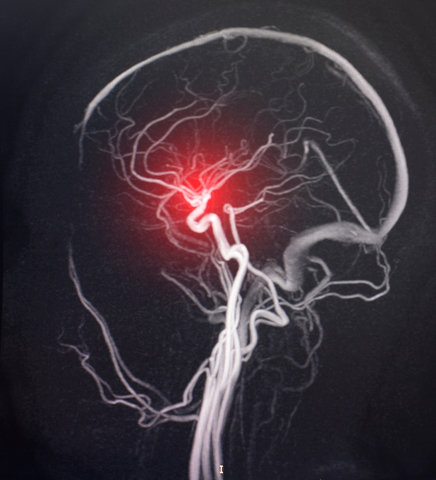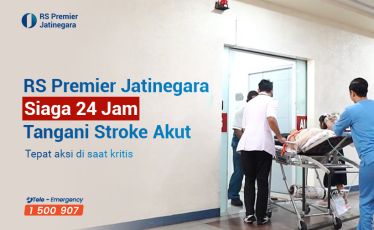+62 811-1300-9840
What is Hemorrhagic Stroke and its Various Complications

Has been reviewed and approved by our doctor
According to data from the Indonesian Health Survey in 2023 published by the Indonesian Ministry of Health (Kemenkes), in Indonesia the prevalence of stroke reached 8.3 per 1,000 population. This causes stroke to become the main cause of disability and death in Indonesia. Where, 18.5% of total deaths were caused by stroke and 11.2% of total disability was also due to stroke.
Not just one, stroke also consists of several types, one of which is hemorrhagic stroke. So what is meant by hemorrhagic stroke? Find out more in this article!
Definition of Hemorrhagic Stroke
Hemorrhagic stroke is a medical condition caused by rupture of blood vessels in the brain. This condition causes a cessation of oxygen and nutrient intake to the brain, which can damage brain cells and tissue, and can cause increased pressure on the brain. Ultimately, it causes impaired brain function and permanent brain damage.
This type of stroke is different from ischemic stroke which occurs due to blockage of blood vessels in the brain. Usually, hemorrhagic strokes occur less frequently than ischemic strokes.
Causes of Hemorrhagic Stroke
In general, hemorrhagic strokes are caused by rupture of blood vessels in the brain. However, several of these conditions are thought to increase the risk of the condition, including:
Severe injury to the head
High blood pressure (hypertension)
Side effects of using blood thinners
Brain tumors that affect the blood vessels in the brain
Hemophilia (a blood disorder that causes bleeding
Blood vessel abnormalities from birth (arteriovenous malformations)
Brain aneurysms (birth defects) and bulging in the walls of blood vessels
Hemorrhagic Stroke Symptoms
Some of the symptoms caused by this condition depend on the type of stroke. Starting from:
Vomiting
Difficulty speaking
Fainting and coma
Can't walk
Breath irregular
Can't control eyeballs
Weakness that occurs suddenly
Numbness or paralysis in one part of the body
Complications of Hemorrhagic Stroke
When a Premier Friend experiences a hemorrhagic stroke, it can cause several complications, for example:
Brain Tissue Damage: Hemorrhagic strokes can result in swelling of the brain, which increases pressure within the skull and compresses vital brain structures.
Brain Herniation : a shift in brain structure that can put pressure on the brain stem, causing respiratory problems, coma or death
Hydrocephalus: Obstruction of the flow of cerebrospinal fluid which increases intracranial pressure which damages brain tissue
Impaired Consciousness to Coma: in disorders of certain areas of the brain, and as a result of increased pressure in the brain, causing impaired consciousness
Paralysis: experiencing paralysis, difficulty speaking, and difficulty controlling emotions.
It's hard to think: difficulty thinking, experiencing memory loss, and feeling pain in several parts of the body.
Tips to Prevent Hemorrhagic Stroke
Hemorrhagic strokes can actually be prevented. So, how to prevent it? Check out the tips!
Exercise regularly every day
Maintain an ideal weight
Adjust your eating pattern and have a healthy diet
Control high blood pressure or hypertension and diabetes
Consume healthy foods such as vegetables and fruit
Do not consume alcoholic drinks and do not smoke
Carry out regular checks to ensure your body's blood pressure is normal
This is a brief explanation of hemorrhagic stroke, causes, symptoms, complications and tips for preventing it. If you need medical personnel, Premier Friends can choose Premier Jatinegara Hospital and go straight to Neuro Center Jakarta.
One of the superior facilities at Premier Jatinegara Hospital is the Stroke Unit, a treatment room with a capacity of 13 beds, namely 4 VIP and 9 Class 1. The stroke unit team consists of a Neurologist Specialist, Stroke Expert Nurse and Nutritionist.
Collaboration between a team of specialist neurologists and skilled nurses at the Stroke Unit of Premier Jatinegara Hospital, provides complete stroke services, starting from initial assessment, diagnosis, treatment planning, program implementation and evaluation.
Contact Us
For information and to make appointment


















